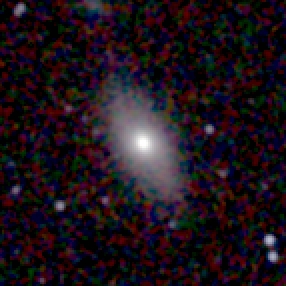NGC 4706
| Galaxy NGC 4706 |
|
|---|---|

|
|
| AladinLite | |
| Constellation | centaur |
|
Position equinox : J2000.0 , epoch : J2000.0 |
|
| Right ascension | 12 h 49 m 54.1 s |
| declination | -41 ° 16 ′ 46 ″ |
| Appearance | |
| Morphological type | SAB (s) 0 ^ 0 ^ |
| Brightness (visual) | 12.8 mag |
| Brightness (B-band) | 13.8 mag |
| Angular expansion | 1.3 x 0.5 |
| Position angle | 24 ° |
| Surface brightness | 12.2 mag / arcmin² |
| Physical data | |
| Affiliation |
Abell 3526 LGG 308 |
| Redshift | 0.012882 ± 0.000011 |
| Radial velocity | 3862 ± 3 km / s |
|
Stroke distance v rad / H 0 |
(165 ± 11) · 10 6 ly (50.5 ± 3.5) Mpc |
| history | |
| discovery | John Herschel |
| Discovery date | June 5, 1834 |
| Catalog names | |
| NGC 4706 • PGC 43411 • ESO 323-1 • MCG -07-26-055 • 2MASX J12495418-4116456 • SGC 124708-4100.5 • GC 3234 • h 3427 • GALEX ASC J124954.31-411643.8 • LDCE 916 NED089 | |
NGC 4706 is a 12.8 mag bright lenticular galaxy of the Hubble type SB0 in the constellation Centaur in the southern sky . It is estimated to be 165 million light years from the Milky Way and about 65,000 light years in diameter.
The galaxies NGC 4696 , NGC 4709 , NGC 4729 , NGC 4730 are located in the same area of the sky .
The object was discovered on June 5, 1834 by John Herschel with an 18-inch reflector telescope, who described it as "vF, vS, R, psbM, 10 arcseconds".
